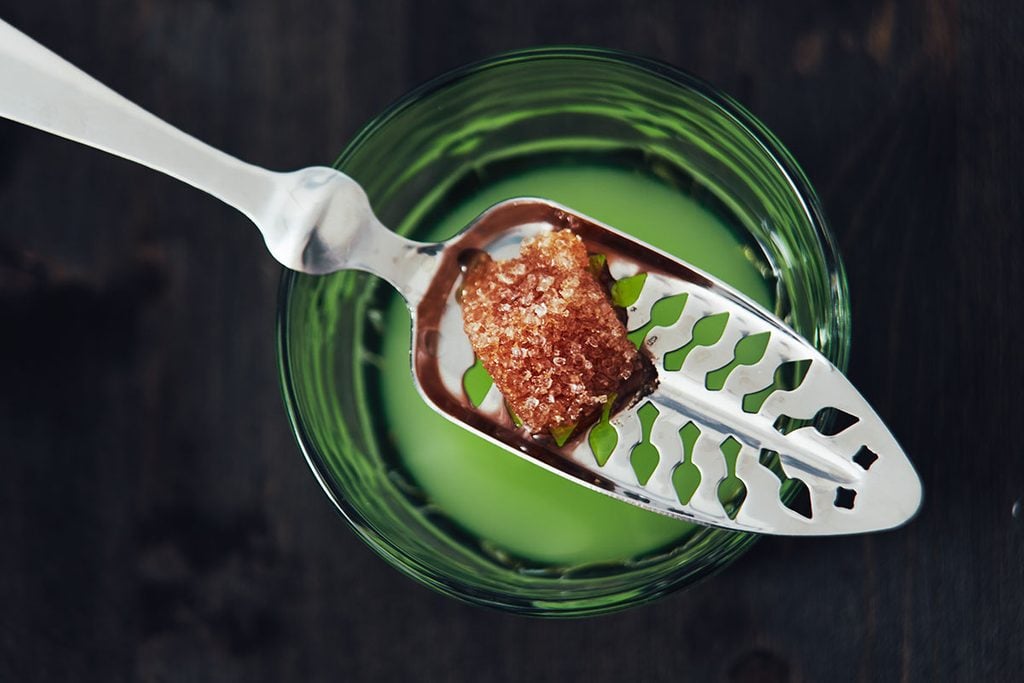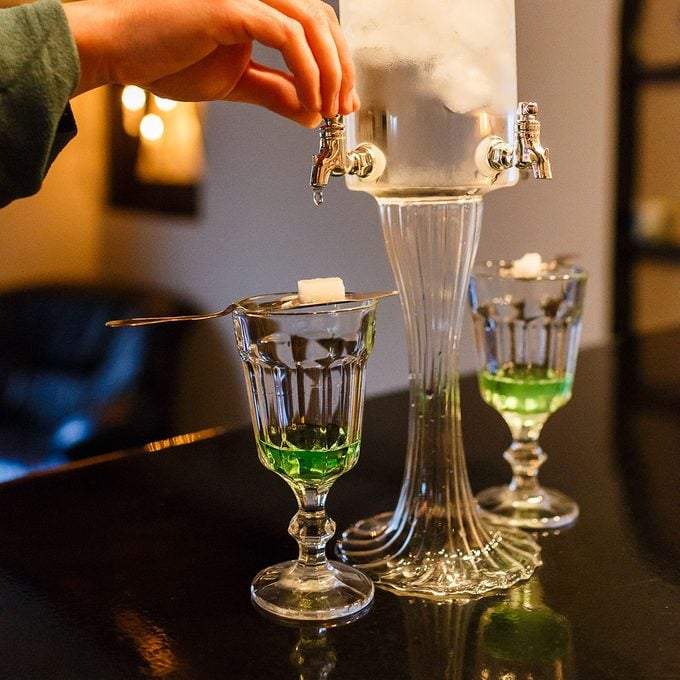What Is Absinthe?
Updated: May 21, 2020

If you're looking for a way to mix up your bar cart, we have your answer. Learn about what absinthe is and much more with this guide.
When you think of absinthe, thoughts of the green fairy, hallucinations and late 19th century artists like Hemmingway, Toulouse-Lautrec and Van Gogh are probably top of mind. But, with the rise of classic cocktails and mixology in the last few years, it’s time to dispel much of the mythology of this green-hued spirit. Here, we’ll go over everything from what absinthe really is to how to drink it and much more.
While you’re at it, it’s time for these retro cocktails to make a comeback.
What Is Absinthe?
Absinthe is a strong spirit created when a neutral alcohol is distilled with botanicals like anise, wormwood, fennel and other herbs and spices for a licorice-like flavor. There are two main styles of absinthe, Swiss/French and Czech/Bohemian
Swiss or French absinthe is considered the most traditional type of absinthe since the spirit was invented in Switzerland, along the French border. It’s made by slowly distilling alcohol with the botanicals listed above and then coloring the nearly-done spirit naturally with additional herbs. Because anise oils don’t dissolve in water, a louche, or white cloudiness, is formed when water is added to Swiss absinthe. Some believe this style is the only ‘true’ kind of absinthe
Czech- or Bohemian-style absinth, spelled without the ‘e’, on the other hand, is made similar to a flavored vodka or whiskey. The spirit is made simply by mixing a base alcohol with flavorings, coloring and sugar for an absinthe-like liqueur. This method produces absinth more quickly and with less expensive ingredients, so it is usually cheaper at a store or bar. Also, since Bohemian absinth doesn’t include any actual anise, Bohemian-style absinth does not create a louche like a Swiss-style would.
Does Absinthe Make You Hallucinate?
No, absinthe does not make you hallucinate. The belief that absinthe causes hallucinations was started in large part by a 19th-century psychiatrist named Valentin Magnan. Magnan studied alcoholics and wrongly concluded that chronic absinthe drinkers had more serious health complications, such as hallucinations and seizures, than other chronic drinkers. He believed that wormwood oil, later specifically thujone, a compound in wormwood oil, caused these hallucinations and seizures.
Magnan’s conclusion, coupled with the rise of alcohol-blamed violence in the late 1800s and early 1900s and the alcohol’s overall bad reputation, caused absinthe production and consumption to be banned in many places around the world.
Recent studies, like this 2010 study from The Open Addiction Journal, have concluded that Magnan’s study and the link between absinthe and hallucinations are false. Any recorded hallucinogenic effects or seizures from absinthe were determined to be due to overconsumption, standard alcohol withdrawal or the absinthe being made with impure alcohol or toxic colorings.
Rest assured, absinthe won’t cause you to hallucinate or give you any side effects that differ from another type of alcohol.
So, Is Absinthe Legal in The US?
Yep. According to the United States’ Alcohol and Tobacco Tax and Trade Bureau, absinthe has been legal in the US for production and consumption since 2007, after a 95-year ban. While the TTB doesn’t have a legal definition of absinthe like it does for vodka, tequila or other types of alcohol, they do specify that absinthe in America contains “less than 10 parts per million of thujone” in accordance with FDA standards and that labels and advertisements for absinthe cannot contain imagery or wording that associates the product with “hallucinogenic, psychotropic or mind-altering effects.”
What is Absinthe’s Alcohol Content?
The exact alcohol content of absinthe depends on which brand you go with, but most have between 45–75% alcohol by volume, or are 80-150 proof.
Where Can I Buy Absinthe?
You can likely find absinthe at your local liquor store or you can shop online at Drizzly. You might be able to score a bottle in your grocery store’s alcohol aisle, but you’ll find a wider selection of brands and styles in a store specifically selling alcohol.
How Do You Drink Absinthe?

Because of its incredibly high alcohol content, absinthe shouldn’t be taken as a shooter alone.
The most common way to drink absinthe is to place a sugar cube on a slotted spoon over a shot of absinthe and slowly pour cold water over the sugar until it dissolves. This creates a milky white cocktail that is a bit diluted but still tastes like absinthe.
Another way is similar in that it also starts with a shot of absinthe in a glass-topped with a sugar cube on a slotted spoon. But this sugar cube is soaked in a drop or two of additional absinthe, lit on fire, then dropped into the glass. This causes all of the absinthe to ignite before it’s doused with a shot of water.
Cocktails are also a good way to use absinthe. A drink named Death in the Afternoon was a favorite of Ernest Hemmingway and involves adding a shot of absinthe to a champagne glass, then filling it with sparkling wine. The supper club-staple Sazerac is also mixed with absinthe. Learn how to make one here.
Now that you’re up to speed on absinthe, learn about mezcal, tequila’s smoky, smooth cousin.
